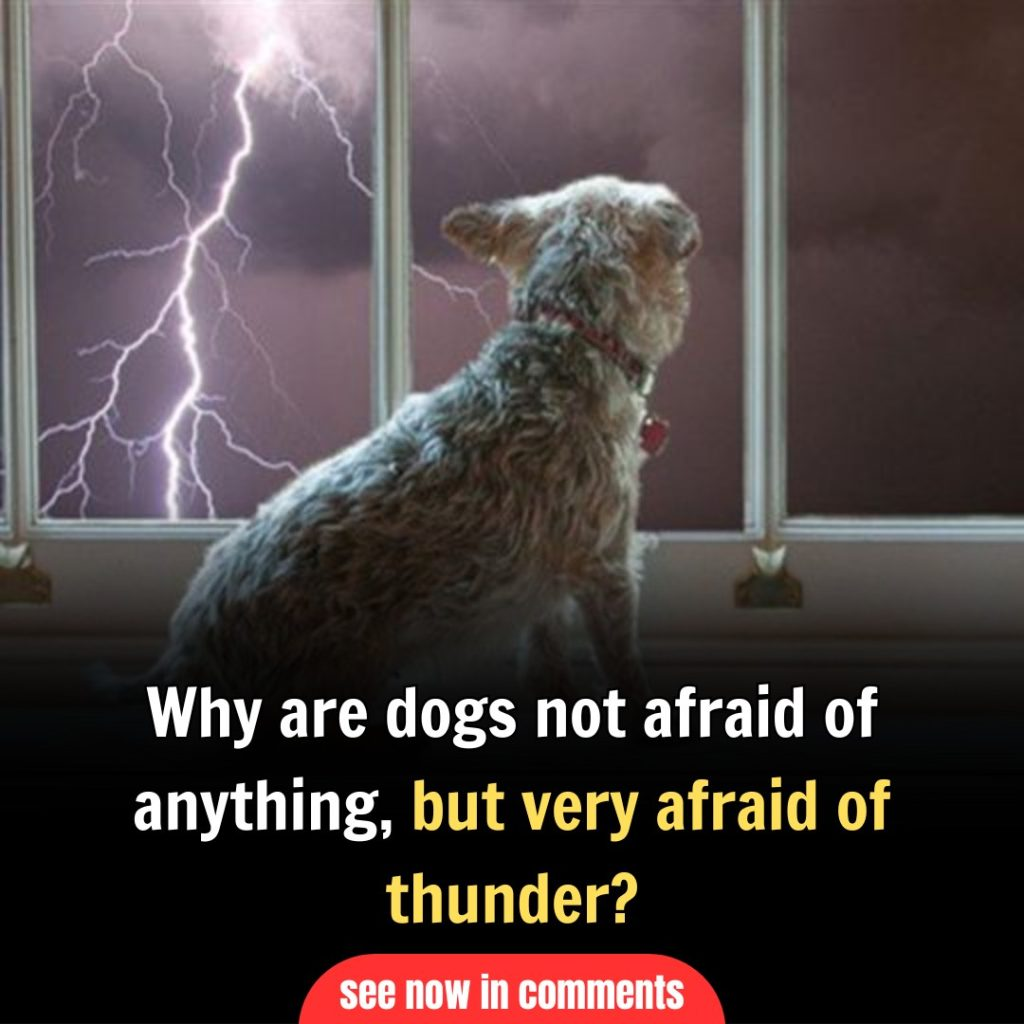If you’ve ever seen your dog trembling, barking, or hiding during a storm, you’re not alone. Many dogs experience extreme anxiety when thunder rolls in or rain starts to pour. But why are storms so unsettling for our furry companions? The fear goes far beyond loud noises—it’s a combination of sensory overload, instinctual reactions, and even static electricity. Let’s explore why dogs are so afraid of storms and the steps you can take to comfort them.
Signs Your Dog Is Scared During a Storm

When a storm is approaching, your dog may exhibit distinct behaviors that indicate stress and fear. Recognizing these signs can help you provide the support they need.
- Hiding in Enclosed Spaces: Dogs often retreat to small, enclosed areas like under beds, behind furniture, or inside closets for a sense of security.
- Physical Symptoms of Fear: Look for trembling, panting, dilated pupils, drooping ears, or a tucked tail. Some dogs even salivate excessively or refuse food.
- Behavioral Changes: Frantic pacing, barking, whining, or even destructive behavior like chewing furniture or scratching doors are common reactions to storm anxiety.
- Escape Attempts: In severe cases, dogs may try to escape the house, putting themselves at risk of injury.
If your dog exhibits these behaviors, they are likely experiencing storm anxiety and need your reassurance and care.
Why Dogs Fear Thunderstorms
The fear of storms in dogs isn’t just about loud noises—it’s rooted in biology and instinct.
Their Hearing Is Extremely Sensitive
Dogs have incredible hearing abilities. They can hear sounds up to four times farther away than humans can. Thunder, which already sounds loud to us, is far more intense for dogs. They may also hear frequencies and vibrations we can’t detect, making storms a jarring sensory experience.
Thunder Triggers Instinctual Responses
In the wild, loud and sudden noises often signal danger, like predators or natural disasters. Even though dogs are domesticated, they still carry these survival instincts. Thunder may feel like a threat they need to escape from.
Changes in Barometric Pressure
Dogs are incredibly attuned to environmental changes. A drop in barometric pressure, which occurs during storms, can make them feel uneasy or alert them to an incoming storm before it even starts.
The Role of Static Electricity
Static electricity during storms can cause discomfort for dogs, especially those with thick or long fur. They may feel the buildup of static charges in their coat, and if they touch a metal surface, they might experience mild shocks. This adds another layer of stress during storms.
How to Help Your Dog Stay Calm During a Storm
While you can’t stop the storm, there are many ways to ease your dog’s anxiety and make them feel safer. Here are practical strategies to help your furry friend during bad weather:
Create a Safe Space
Designate a quiet, cozy area where your dog can retreat during storms. It could be a small room, a crate with blankets, or a corner of your home away from windows. Adding familiar toys and a comfortable bed can make the space even more inviting.
Use Soundproofing
Thunder can be overwhelming, but you can muffle the sound. Use thick curtains, rugs, or even towels to reduce noise. Playing calming music or white noise can also help drown out the sound of the storm.
Prevent Static Buildup
To reduce static shocks, consider using an anti-static spray designed for pets or lightly rub your dog’s coat with a dryer sheet (make sure it’s pet-safe). Placing your dog on a grounded surface, like a rubber mat, can also minimize static electricity.
Stay Close and Comfort Them
Your presence can be incredibly soothing. Sit near your dog, speak in a calm voice, and offer gentle petting to reassure them. Be careful not to overreact to their fear, as this could reinforce their anxiety.
Try Anxiety Wraps
Products like the ThunderShirt apply gentle pressure to your dog’s body, mimicking the calming sensation of a hug. Many dogs find this comforting during storms.
Use Calming Aids
Natural remedies like calming supplements, pheromone diffusers, or essential oils designed for pets can help reduce stress. Consult your vet for recommendations.
Behavioral Training
If your dog’s storm anxiety is severe, a professional trainer or animal behaviorist can help them learn to associate storms with positive experiences. This process may take time but can be highly effective.
Understanding Your Dog’s Perspective
Imagine hearing thunder four times louder than normal or feeling small shocks on your skin. For your dog, storms are not just an inconvenience—they are overwhelming sensory events that can trigger survival instincts.
By understanding what your dog is experiencing, you can better empathize with their fear and take the right steps to comfort them. Remember, your calm demeanor is essential. Dogs often pick up on your emotions, so staying composed can help them feel more secure.
Why Addressing Storm Anxiety Matters
Ignoring storm anxiety can lead to long-term behavioral problems. Over time, your dog’s fear may worsen, and they could develop destructive habits or health issues related to chronic stress. Addressing their fear early not only helps them feel better but also strengthens the bond between you and your pet.
A Storm-Safe Plan for Your Dog
Here’s a quick checklist to prepare for the next storm:
- Identify a safe space for your dog.
- Keep anti-static tools and calming aids handy.
- Stay close and provide gentle reassurance.
- Play soothing music or white noise to mask the thunder.
- Consult your vet for professional advice if needed.
Preparation can make all the difference in helping your dog weather the storm—both literally and emotionally.
Conclusion: A Calmer Future for Your Dog
Dogs’ fear of storms stems from their heightened senses, instinctual reactions, and even physical discomfort like static electricity. While storms may always be stressful for them, your proactive efforts can significantly reduce their anxiety.
By creating a safe environment, offering reassurance, and using tools like anxiety wraps or calming products, you can help your furry friend feel more secure during bad weather. Your patience and understanding go a long way in making storms less frightening for your dog.
The next time thunder strikes, you’ll know exactly how to provide comfort and support. Together, you and your dog can face the storm with confidence and calm.


